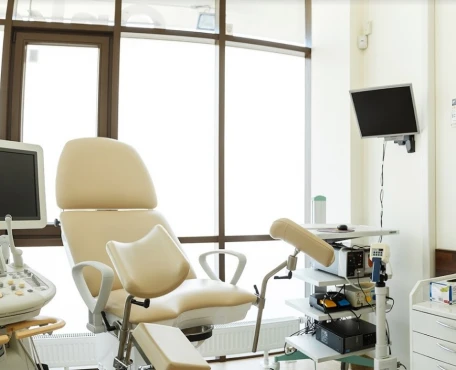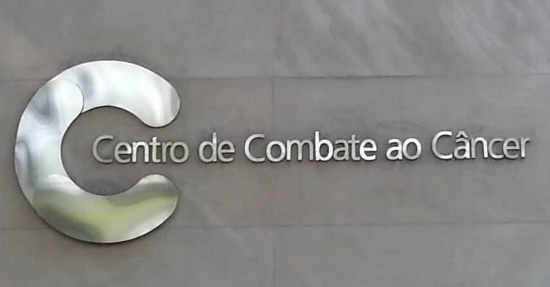Disease Types & Epidemiology
How common is the disease?
Gallbladder cancer originates in the cells of the gallbladder, a small organ located beneath the liver that stores bile.
The most common type of gallbladder cancer is adenocarcinoma, which begins in the glandular cells lining the gallbladder. Gallbladder cancer is relatively rare, accounting for only 1% of all cancer cases. In the United States, approximately 12,000 new cases are diagnosed each year, and the disease causes about 4,000 deaths annually [cancer.net].
Causes & Risk Factors
What is the primary issue of gallbladder cancer?
The exact cause of gallbladder cancer is not fully understood, but several risk factors have been identified:
- Gallstones: The most significant risk factor, gallstones are present in up to 80% of gallbladder cancer cases. Chronic inflammation caused by gallstones can lead to cellular changes and cancer.
- Gender: Women are at higher risk than men, with a threefold greater incidence.
- Age: The risk increases with age, particularly after 65, with the average age at diagnosis being 72 years.
- Ethnicity: Higher rates are observed in Native American and Hispanic populations.
- Gallbladder Polyps: Polyps larger than 1 cm are more likely to be cancerous.
- Chronic Infections: Conditions like chronic typhoid infection increase the risk.
- Primary Sclerosing Cholangitis: This disease causes inflammation and scarring of the bile ducts, raising the risk of gallbladder cancer.
- Obesity: Being overweight increases the risk of developing gallbladder cancer by approximately 20%.
- Diet: High intake of carbohydrates and low intake of fiber may increase the risk [cancer.org].
Clinical Manifestation & Symptoms
What signs should one anticipate while suspecting gallbladder cancer?
Early gallbladder cancer often presents no symptoms. When symptoms do appear, they may include:
- Abdominal Pain: Especially in the upper right part of the abdomen, experienced by about 50% of patients.
- Jaundice: Yellowing of the skin and eyes, seen in approximately 90% of advanced cases.
- Nausea and Vomiting: Common gastrointestinal symptoms affecting about 20% of patients.
- Lumps: A lump in the abdomen, particularly in the upper right side, noted in about 25% of cases.
- Loss of Appetite: Often accompanied by significant weight loss, experienced by around 20% of patients.
- Fever: Can occur due to infection or the cancer itself, affecting approximately 15% of patients [cancer.org].
Diagnostic Route & Screening
When, where, and how should gallbladder cancer be detected?
There are no standard screening tests for gallbladder cancer in the general population. Diagnosis usually occurs incidentally during imaging tests for other conditions or surgeries for gallstones. Diagnostic methods include:
- Imaging Tests: Ultrasound, CT scans, and MRI can help visualize tumors. Ultrasound has a sensitivity of about 60-70%, while CT scans can detect gallbladder cancer with about 80% sensitivity.
- Endoscopic Retrograde Cholangiopancreatography (ERCP): Allows for imaging and biopsy of the bile ducts. It has a diagnostic accuracy of approximately 90%.
- Percutaneous Transhepatic Cholangiography (PTC): Involves injecting contrast dye into the bile ducts for imaging.
- Biopsy: Tissue samples are examined for cancer cells. This can be done during surgery or via needle biopsy.
- Blood Tests: Elevated levels of certain substances like CA 19-9 can indicate gallbladder cancer, although they are not definitive. Elevated CA 19-9 levels are present in about 50-75% of gallbladder cancer patients [cancer.org].
Treatment Approaches
What are the options for managing gallbladder cancer?
The treatment of gallbladder cancer depends on the stage of the disease and the patient's overall health. The main treatment options include:
- Surgery:
- Cholecystectomy: Removal of the gallbladder, typically for early-stage cancer. This procedure is performed in about 20-30% of diagnosed cases.
- Extended Cholecystectomy: Includes removal of part of the liver and lymph nodes if the cancer has spread. This procedure is often used in cases where the cancer has invaded surrounding tissues.
- Palliative Surgery: Used to relieve symptoms in advanced cases, such as bypass surgery to alleviate bile duct blockage [cancer.org].
- Radiation Therapy:
- External Beam Radiation Therapy (EBRT): Uses high-energy rays to kill cancer cells. It is often combined with chemotherapy to enhance effectiveness.
- Brachytherapy: Involves placing radioactive material inside the body near the cancer cells.
- Chemotherapy: is an important treatment approach for advanced gallbladder cancer using cytotoxic drugs to destroy cancer cells.
- First-Line Treatment: Gemcitabine combined with cisplatin is commonly used for advanced gallbladder cancer. Studies have shown that this combination can increase median survival to about 11.7 months [annalsofoncology.org].
- Second-Line Treatment: Options include fluorouracil (5-FU) combined with oxaliplatin (FOLFOX regimen) or capecitabine with oxaliplatin (CAPOX regimen). These treatments are used if the cancer progresses despite first-line therapy [ncbi.nlm.nih.gov].
- Targeted Therapy:
- Involves drugs that target specific aspects of cancer cells, such as proteins or genes that promote cancer growth. For example, erlotinib targets the EGFR protein and is being studied in clinical trials for its efficacy in treating gallbladder cancer [cancer.gov].
Prognosis
How does cutting-edge science improve the lifespan and quality of life for those with the disease?
The prognosis for gallbladder cancer depends significantly on the stage at diagnosis. Early-stage gallbladder cancer has a better prognosis because it can often be completely removed by surgery. Advanced stages have a poorer prognosis due to the spread of cancer beyond the gallbladder.
- Survival Rates: The five-year survival rate for localized gallbladder cancer is approximately 65%. This rate drops to about 28% if the cancer has spread to nearby tissues or lymph nodes and further to about 2% if it has spread to distant parts of the body [cancer.net].
Advancements in surgical techniques, chemotherapy, and radiation therapy have improved outcomes for some patients. For example, the introduction of the gemcitabine-cisplatin combination therapy has significantly improved survival rates for patients with advanced gallbladder cancer. Clinical trials continue to explore new treatments, including immunotherapy and personalized medicine based on genetic profiling. The use of precision medicine, such as targeting the HER2 protein in certain gallbladder cancers, is showing promise in ongoing research [bmccancer.biomedcentral.com].
Regular follow-up care is crucial for monitoring recurrence or managing any long-term side effects of treatment. This includes physical examinations, imaging tests, and blood tests every few months to several years depending on the stage of cancer and treatment received. For patients who undergo surgical resection, follow-up typically involves imaging and laboratory tests every 3-6 months for the first two years, then annually [cancer.org].































































































